Hernia After Pregnancy: A Comprehensive Guide To Its Causes, Symptoms, And Effective Treatments
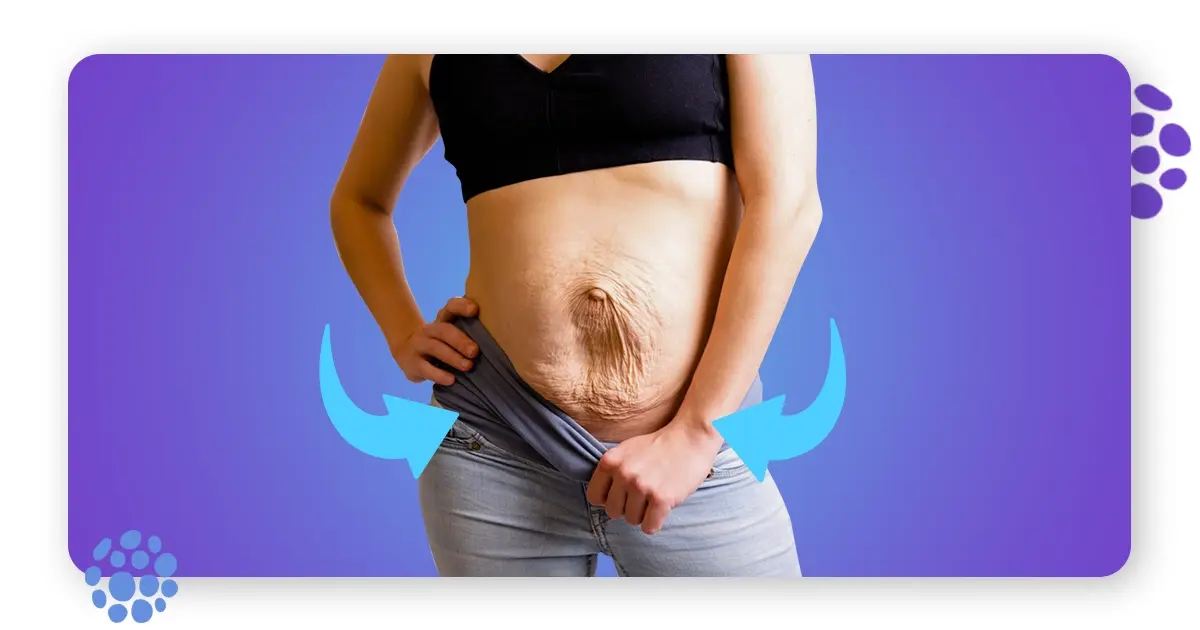
Hey ladies, welcome to another informative post! Today we will be discussing the issue of…
Hey ladies, welcome to another informative post! Today we will be discussing the issue of hernia after pregnancy, its causes, symptoms, and treatment.
When an organ or a mass of tissue penetrates through a weak spot in the muscles and appears as a painful bulge under the skin, it is called a hernia. Due to hormonal changes and the extra strain on abdominal muscles, pregnancy can escalate the risk of hernia. Understanding the causes and symptoms of hernia after pregnancy empowers pregnant women and new mothers to prevent hernias or seek appropriate treatment for their overall health and well-being.
What is Hernia?
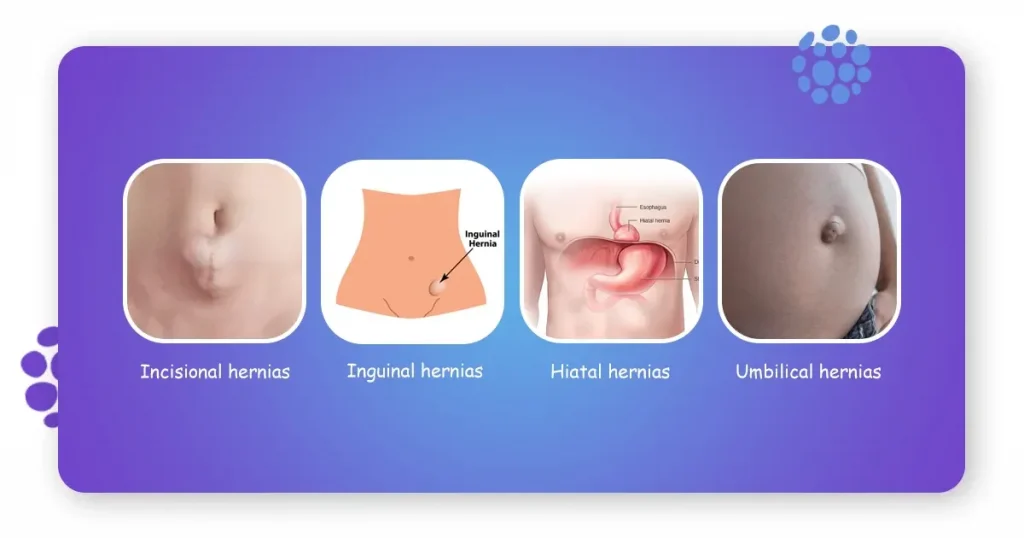
We will begin right from the basics. Pregnancy can cause loosening of muscles and connective tissues. Sometimes, an organ or tissue may protrude through weak spots of such muscles, creating a hernia. It usually occurs when the affected area experiences muscle weakness along with increased pressure resulting from persistent coughing, strained bowel movements or lifting heavy objects.
Hernias are classified as follows based on the areas where they occur:
- Incisional hernias – These appear areas where surgical incisions were made in the past.
- Inguinal hernias – Such hernias occur in the groin area.
- Hiatal hernias – These hernias develop in the upper stomach or the diaphragm area.
- Umbilical hernias – These hernias are seen protruding around the belly button.
Hernia and Pregnancy
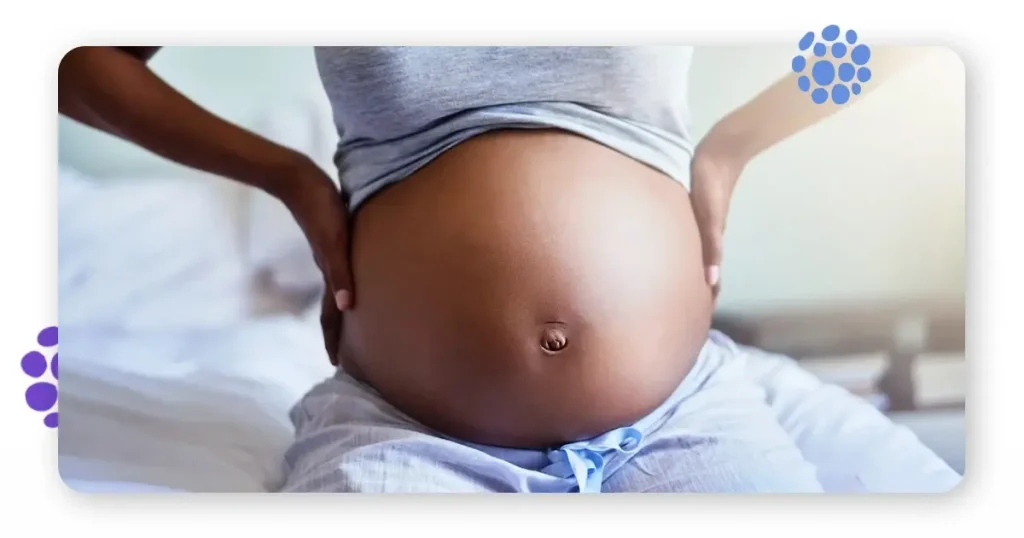
Wondering how hernia and pregnancy are connected? Pregnancy is the time when a woman’s body undergoes tremendous changes. Hormonal changes lead to loosening of abdominal muscles, resulting in weak areas between the muscles. The expanding uterus exerts pressure on the abdominal muscles from within, leading to the formation of hernia.
Excess weight gain, history of hernia, multiple pregnancies, and performing activities that strain abdominal muscles are other factors that may contribute to hernia during pregnancy. In addition, childbirth can immensely strain abdominal muscles and aggravate existing issues of hernia.
Causes of Hernia After Pregnancy
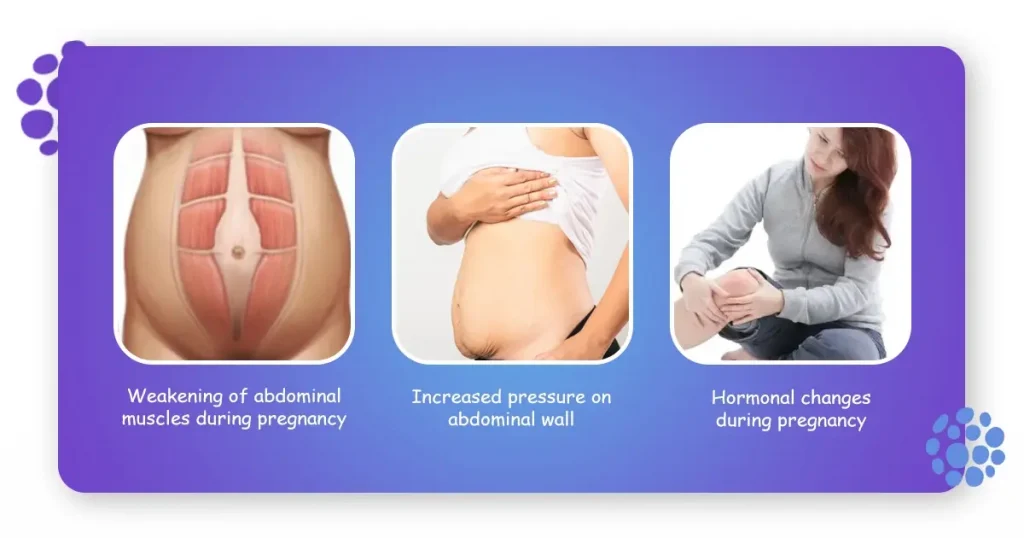
Now let us discuss what causes hernia after pregnancy. Some of the major reasons include:
Weakening of Abdominal Muscles During Pregnancy
As the foetus continues growing within the uterus, the abdominal muscles expand and stretch, often leading to the weakening of muscles. This is especially true in the case of the rectus abdominis – long muscles situated vertically in the front part of the abdomen. Weakening makes abdominal muscles more prone to herniation.
Increased Pressure on Abdominal Wall
The growing pressure on abdominal walls – that may already be weakened due to excess stretching to accommodate the developing foetus – increases the risk of hernia. The most vulnerable spots include the lower abdominal area and the area surrounding the incision from a Caesarean section delivery.
Hormonal Changes During Pregnancy
Hormonal changes related to pregnancy affect the body in significant ways. For instance, the hormone relaxin secreted during pregnancy has been designed to loosen joints and ligaments to prepare the body for impending childbirth. But relaxin also tends to loosen connective tissues in the abdomen, thereby increasing the risk of herniation.
Common Symptoms of Hernia After Pregnancy

It’s time to move on to some of the most common symptoms of hernia after pregnancy. Here are some of them:
Visible Bulge or Lump in the Affected Area
A common sign of post-pregnancy hernia is a noticeable bulge in the abdomen that becomes more prominent during physical activities. Sometimes, the bulge can be gently pushed back when you are lying down.
Discomfort or Pain During Physical Activities
Experiencing pain or discomfort in the abdominal area during physical activities or when you cough or sneeze, it might be a symptom of post-pregnancy hernia. The intensity of pain may vary from sharp to dull.
Symptoms Worsen with Lifting, Coughing or Straining
Hernia symptoms may worsen when pressure is applied during lifting, sneezing, coughing or even straining during bowel movements. The hernia may seem to protrude further in such situations.
Diagnosing Hernia After Pregnancy

If you can relate to the symptoms we have discussed and you suspect you have hernia after pregnancy, it is vital to seek medical attention. A healthcare professional will perform a physical examination, assess the lump or bulge in your abdominal area and check for tenderness in the affected area before offering an accurate diagnosis.
Sometimes, the healthcare professional may recommend imaging tests to confirm hernia after pregnancy. With MRI or ultrasound scans, doctors are able to precisely evaluate the size and location of hernia.
During the process of diagnosis, the healthcare provider may ask relevant questions about your medical history and your specific symptoms. Answering these questions will provide them valuable information that is then used to determine potential risk factors and the right treatment options.
Treatment Options for Hernia After Pregnancy

Healthcare providers may recommend non-surgical methods or surgical interventions to manage and treat hernia after pregnancy. Here is a closer look at what these two options entail.
Non-Surgical Treatments
Non-surgical treatment methods include self-care measures and lifestyle modifications designed to reduce existing symptoms and prevent further complications. You could try approaches such as:
- Avoid heavy lifting: After pregnancy, your abdominal muscles need time to tighten and gain strength. Do it a favor by avoiding heavy lifting that can strain abdominal muscles. If you need to lift something heavy, bend the knees so that the strain falls on your legs rather than your back or the abdomen.
- Weight management: Excessive weight gain may sometime contribute to the development of hernia. Keep an eye on your weight by sticking to a balanced diet and making regular exercise a part of your routine.
- Avoid heavy lifting: After pregnancy, your abdominal muscles need time to tighten and gain strength. Do it a favor by avoiding heavy lifting that can strain abdominal muscles. If you need to lift something heavy, bend the knees so that the strain falls on your legs rather than your back or the abdomen.
- Dietary changes: Strained bowel movements can worsen the symptoms of hernia after pregnancy. With s few dietary modifications, it is possible to alleviate constipation and acid reflux. Avoid foods that trigger these symptoms, drink plenty of water and consume smaller and more frequent meals.
- Practise proper posture: Certain postures can exert additional strain on abdominal muscles, thereby aggravating the symptoms of hernia. Practise proper postures while standing, sitting or exercising to avoid unnecessary pressure on the affected area.
- Supportive garments or braces: Supportive garments such as maternity belts or postpartum girdles have been designed to provide support to abdominal muscles and ease the pressure on the hernia. Your healthcare provider can help you choose the right type of garment or brace for your situation.
Surgical Treatments
If non-surgical techniques do not work, your healthcare provider may suggest surgical interventions. Depending on the type of your hernia and its severity, you may be recommended surgical procedures such as:
- Laparoscopic hernia repair: This is a minimally invasive procedure in which a laparoscope is inserted through a small incision near the herniated area. The laparoscope guides the surgeon in repairing the hernia.
- Herniorrhaphy: This is an open surgical method in which an incision is made near the hernia to repair the herniated tissues. Mesh or sutures may be used for this procedure.
- Robotic-assisted hernia repair: Just as the term suggests, this is an advanced technique that utilises robotic technology to assist the surgeon in hernia repair. This technique is notable for its high level of visualisation and precision, making it the most recommended option for recurring or complex hernias.
Determining the timing of surgery for hernia after pregnancy may depend on numerous factors including the size and severity of hernia and any related complications. After a meticulous assessment of your condition, your healthcare provider will offer reliable advice on the right timing and appropriate procedure.
Remember that although surgical interventions are effective in treating hernia after pregnancy, it is important to be aware of its risks and benefits. All surgical procedures come with its share of risks that include bleeding, infection, mesh-related complications or reappearance of the hernia. However, surgical procedures also offer benefits such as long-term relief from symptoms and lower risk of complications.
Recovery and Post-Operative Care
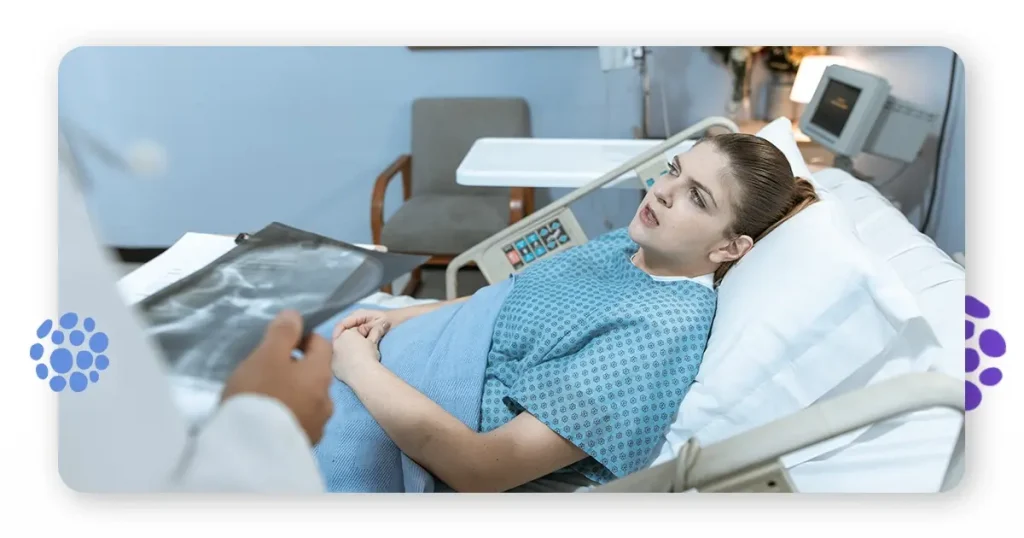
Recovery Timeline
Recovering from the surgery for hernia after pregnancy varies from one woman to another. However, here is a general timeline of the recovery process so that you know what to expect after the surgery:
- Right after surgery: Immediately after surgery, you will be shifted to a recovery room where your progress will be closely monitored. As the effect of anaesthesia subsides, you may feel groggy and nauseated and experience pain or discomfort.
- Hospital stay: The length of your hospital stay will depend on the type of surgery and your general health status. Usually, you may have to stay at least for two days during which the healthcare team will monitor your progress and provide pain management medications as required.
- First few days after returning home: You must take it slow for the first few days after being discharged from the hospital. Having someone to help out will be great so that you can focus on getting ample rest. The surgical site may be swollen and painful. Follow the instructions of your surgeon regarding medications and dressing the wound.
- Gradually resuming normal activities: Although you can gradually resume normal activities in the next few weeks, avoid anything that is strenuous or involves heavy lifting. Seek the surgeon’s recommendation about returning to work. Usually, women with desk jobs are able to resume working within two weeks.
- Complete recovery: The Surgical incision typically heals completely in about 4-6 weeks. Your surgeon will provide instructions regarding wound care and activity constraints during follow-up appointments.
General Guidelines for Recovery
Following post-operative instructions is vital to ensure total recovery devoid of any complications. Proper wound care and taking medications on time promote healing and prevent infections. Activity restrictions help reduce the risks of complications such as recurrence of hernia and opening of the incision. Giving your body ample time to heal and gradually resuming physical activities can ensure that you return to your normal life at the earliest.
Your surgeon will offer detailed recommendations for managing pain and preventing complications. Pain management consists of pain medications to manage post-operative pain, applying ice packs to the surgical site to reduce swelling, avoiding strenuous activities and following wound care instructions.
To prevent complications after the surgery, keep the incision area clean, monitor the site for signs of infections, avoid heavy lifting and get adequate rest. If constipation is an issue, drink plenty of water and include fibre-rich food in your diet. Your healthcare provider may prescribe mild laxatives for smoother bowel movements.
Preventive Measures for Hernia After Pregnancy

You can do your bit to prevent hernia after pregnancy. And one of the most effective methods is to engage in regular exercises designed to strengthen abdominal muscles. Consult your healthcare professional to determine exercises that are appropriate for your condition. Abdominal contractions, pelvic tilts and mild core workout offer excellent results in improving muscle tone to reduce the risk of hernia.
Understanding and practising proper lifting techniques is another factor integral to preventing hernia after pregnancy. As part of their normal routine, new mothers constantly lift their infants and other heavy objects – activities that can strain abdominal muscles if not done properly. Make it a habit to squat down and use your legs and core muscles to lift objects rather than straining the back and abdominal muscles.
Maintaining healthy weight and lifestyle is equally important in preventing hernia after pregnancy. Excessive weight can put additional strain on abdominal muscles, thereby increasing the chances of herniation. Follow a balanced diet that includes lots of whole grains, fruits and vegetables. Make exercise a part of your normal routine and focus on activities that help strengthen abdominal muscles. Avoid excess straining during bowel movements to cut down the risk of hernia.
Final word
So today we have comprehensively discussed the causes, symptoms, treatment options and preventive measures for hernia after pregnancy. We have also explored the significance of post operative care and healthy lifestyle to promote total recovery. To receive accurate diagnosis, appropriate treatment and reliable guidance on managing hernia, it is vital to seek medical attention. By understanding the reasons for hernia after pregnancy and raising awareness about the issue, we can ensure that womens are empowered to make informed decisions to sustain their quality of life and overall well-being.

